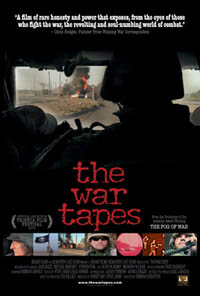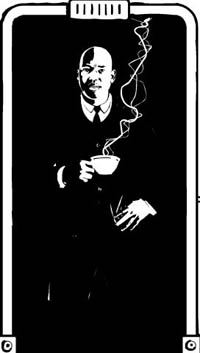If you’re in the New York area, don’t miss this. Friday, March 21, 2008, 7-9pm – ?New York, NY – ?125 Maiden Lane, 2nd Floor.
FOR ONE NIGHT ONLY: Step inside three books, drink free beer and wine, and experience the future of the book:



Mark Batty Publisher, Hotel St. George Press, the Institute for the Future of the Book, and the Lower Manhattan Cultural Council‘s Workspace Writers Residency program offer a night of multi-media readings that invite attendees to step inside books, celebrating how new media and traditional publishing fuse to create innovative projects that are more than “just books.” On this night, authors Garth Risk Hallberg, Alex Rose, and Alex Itin demonstrate how their stories rely on more than just words.
Hallberg’s illustrated novella, A Field Guide to the North American Family, documents two fictional families through 63 entries accompanied by evocative photographs contributed by some of today’s freshest photographic talents, as culled from the book’s ongoing companion website, afieldguide.com. Read from start to finish or in a “choose your own adventure” style, Hallberg’s attention to narrative detail makes clear why he was included in the 2008 Harcourt Best New American Voices anthology, and why Print called A Field Guide to the North American Family “a modern illuminated manuscript.” Hallberg will project photographs from the book.
The interwoven, post-modern folktales that comprise The Musical Illusionist by Alex Rose muse upon historical arcana, tethered together by music and topography. Drawing on his experience as a director whose films, videos, and animations have appeared on HBO, MTV, Comedy Central, Showtime, and the BBC, Rose conjures, in the words of the Village Voice, “the playful parables of Jorge Luis Borges . . . exotic maps and exquisite prints further suggest a volume passed down from an epoch much more enthralled with mystery than our own.” Rose will read from the title story of his collection, accompanied by a surround-sound score composed by David Little and recorded by the Formalist Quartet.
As an artist-in-residence at Brooklyn’s Institute for the Future of the Book, Alex Itin uses text, original illustrations and animations, and music to encourage readers to reconsider the definition of a book. Take for example Itin’s Orson Whales: Melville’s Moby Dick meets Orson Welles, and Led Zeppelin. Itin’s multi-media books will be screened.
The LMCC is the leading voice for arts and culture in downtown New York City, producing cultural events and promoting the arts through grants, services, advocacy, and cultural development programs.
Category Archives: newyork
democratization and the networked public sphere
New Yorkers take note! This just came in from Trebor Scholz at the Institute for Distributed Creativity: a terrific-sounding event next Friday evening at The New School. Really wish I could attend but I’ll be doing this in London. Details below.
Democratization and the Networked Public Sphere
* Panel Discussion with dana boyd, Trebor Scholz, and Ethan Zuckerman
Friday, April 13, 2007, 6:30 – 8:30 p.m.
The New School, Theresa Lang Community and Student Center
55 West 13th Street, 2nd floor
New York City
Admission: $8, free for all students, New School faculty, staff, and alumni with valid ID
This evening at the Vera List Center for Art & Politics will discuss the potential of sociable media such as weblogs and social networking sites to democratize society through emerging cultures of broad participation.
danah boyd will argue four points. 1) Networked publics are changing the way public life is organized. 2) Our understandings of public/private are being radically altered 3) Participation in public life is critical to the functioning of democracy. 4) We have destroyed youths’ access to unmediated public life. Why are we now destroying their access to mediated public life? What consequences does this have for democracy?
Trebor Scholz will present the paradox of affective immaterial labor. Content generated by networked publics was the main reason for the fact that the top ten sites on the World Wide Web accounted for most Internet traffic last year. Community is the commodity, worth billions. The very few get even richer building on the backs of the immaterial labor of very very many. Net publics comment, tag, rank, forward, read, subscribe, re-post, link, moderate, remix, share, collaborate, favorite, write. They flirt, work, play, chat, gossip, discuss, learn and by doing so they gain much: the pleasure of creation, knowledge, micro-fame, a “home,” friendships, and dates. They share their life experiences and archive their memories while context-providing businesses get value from their attention, time, and uploaded content. Scholz will argue against this naturalized “factory without walls” and will demand for net publics to control their own contributions.
Ethan Zuckerman will present his work on issues of media and the developing world, especially citizen media, and the technical, legal, speech, and digital divide issues that go alongside it. Starting out with a critique of cyberutopianism, Zuckerman will address citizen media and activism in developing nations, their potential for democratic change, the ways that governments (and sometimes corporations) are pushing back on their ability to democratize.
For more information about the panelists go here.
monkeybook
 New York readers save the date!
New York readers save the date!
Next Wednesday the 28th the Institute is hosting the first of what hopes to be a monthly series of new media evenings at Brooklyn’s premier video salon and A/V sandbox, Monkeytown. We’re kicking things off with a retrospective of work by our longtime artist in residence, Alex Itin. February 15th marked the second anniversary of Alex’s site IT IN place, which we’re preparing to relaunch with a spruced up design and a gorgeous new interface to the archives (design of this interface chronicled here and here). We’d love to see you there.
For those of you who don’t know it, Monkeytown is unique among film venues in New York — an intimate rear room with a gigantic screen on each of its four walls, low comfy sofas and fantastic food. A strange and special place. If you think you can come, be sure to make a reservation ASAP as seating will be tight.
More info about the event here.
save the internet! protest today at verizon world hq

Today in Boston, Chicago, New York and San Francisco.
For New Yorkers today (some of us will be there):
National Day of Out(R)age – New York City Protest
Location: Verizon World Headquarters
140 West Street at Vesey Street
Date/Time: Wednesday, May 24th 12:30-1:30 (arrive 12:15)
ACE-23 trains to Chambers St.
Organized by the saveaccess.org Coalition with Fairness and Accuracy In Reporting (FAIR), NYC Grassroots Media Coalition, Paper Tiger TV and more!.
war machinima
Ray, Bob and I spent last week out in Los Angeles at our institutional digs (the Annenberg Center for Communication at USC), where we held a pair of meetings with professors from around the US and Canada to discuss various coups we are attempting to stage within the ossified realm of scholarly and textbook publishing. Following these, we were able to stick around for a fun conference/media festival organized by Annenberg’s Networked Publics project.
The conference was a mix of the usual academic panels and a series of curated mini-exhibits of “do-it-yourself” media, surveying new genres of digital folk art currently proliferating across the net such as political remix movies, anime music videos, “digital handmade” art projects (which featured the near and dear Alex Itin — happy birthday, Alex!), and of course, machinima: films made inside of video game engines.
 As we enjoyed this little feast of new media, I was vaguely aware that the Tribeca film festival was going on back in New York. As I casually web-surfed through one of the panels — in the state of continuous partial attention that is now the standard state of being all these networky conferences — I came across an article about one of the more talked about films appearing there this year: “The War Tapes.” Like Gunner Palace and Occupation Dreamland, “The War Tapes” is a documentary about American soldiers in Iraq, but with one crucial difference: all the footage was shot by actual soldiers.
As we enjoyed this little feast of new media, I was vaguely aware that the Tribeca film festival was going on back in New York. As I casually web-surfed through one of the panels — in the state of continuous partial attention that is now the standard state of being all these networky conferences — I came across an article about one of the more talked about films appearing there this year: “The War Tapes.” Like Gunner Palace and Occupation Dreamland, “The War Tapes” is a documentary about American soldiers in Iraq, but with one crucial difference: all the footage was shot by actual soldiers.
Back in 2004, director Deborah Scranton gave video cameras to ten members of the New Hampshire National Guard who were about to depart for a yearlong tour in Iraq. They went on to shoot a combined 800 hours of film, the pared-down result of which is “The War Tapes.” Reading about it, I couldn’t help but think that here was a case of real-life machinima. Give the warriors cameras and glimpse the war machine from the inside — carve out a new game within the game.
Granted, it’s a far from perfect analogy. Machinima involves a total repurposing of the characters and environment, foregoing the intended objectives of the game. In “The War Tapes,” the soldiers are still on their mission, still within the chain of command. And of course, war isn’t a video game. But isn’t it advertised as one?
Time Square, New York City (the military-entertainment complex)
There’s something undeniably subversive about giving cameras to GIs in what is such a thoroughly mediated war, a sort of playing against the game — if not of the game of occupation as a whole, then at least the game of spin. “I’m not supposed to talk to the media,” says one soldier to Steve Pink, one of the film’s main subjects, as he attempts to conduct an interview. To which Pink replies: “I’m not the media, dammit!”
In the clips I found on the film’s promotional site (the general release is later this summer), the overriding impression is of the soldiers’ isolation and fear: the constant terror of roadside bombs, frantic rounds fired into the green night-vision darkness, swaddled in helmets and humvees and hi-tech weaponry. It’s a frightening game they play. Deeply impersonal and anonymous, and in no way resembling the pumped-up, guitar-screeching game that the military portrays as war in its recruiting ads. This is the horrible truth at the bottom of the “Army of One” slogan: you are a lone digit in a massive calculation. Just pray you don’t become a zero.
Yet naturally, they find their own games to play within the game. One clip shows the tiny, gruesome spectacle of two soldiers, in a moment of leisure, pitting a scorpion against a spider inside a plastic tub, reenacting their own plight in the language of the desert.
At the Net Publics conference, we did see see one example of genuine machinima that made its own spooky commentary on the war: a hack of Battlefield 2 by Swedish game forum Snoken that brilliantly apes the now-famous Sony Bravia commercial, in which 250,000 colored plastic balls were filmed cascading through the streets of a San Francisco.
Here’s Battlefield:
And here’s the original Sony ad:
McKenzie Wark doesn’t address machinima in GAM3R 7H30RY (which launches in about a week), but he does discuss video games in the context of the “military entertainment complex”: the remaking of postmodern capitalist society in the image of the digital game, in which every individual is a 1 or a 0 locked in senseless competition for advancement through the levels, each vying to “win” the game:
The old class antagonisms have not gone away, but are hidden beneath levels of rank, where each agonizes over their worth against others in the price of their house, the size of their vehicle and where, perversely, working longer and longer hours is a sign of winning the game. Work becomes play. Work demands not just one’s mind and body but also one’s soul. You have to be a team player. Your work has to be creative, inventive, playful – ludic, but not ludicrous.
Video games (which can actually be won) are allegories of this imperfect world that we are taught to play like a game, as though it really were governed by a perfect (and perfectly fair) algorithm — even the wars that rage across its hemispheres:
Once games required an actual place to play them, whether on the chess board or the tennis court. Even wars had battle fields. Now global positioning satellites grid the whole earth and put all of space and time in play. Warfare, they say, now looks like video games. Well don’t kid yourself. War is a video game – for the military entertainment complex. To them it doesn’t matter what happens ‘on the ground’. The ground – the old-fashioned battlefield itself – is just a necessary externality to the game. Slavoj Zizek: “It is thus not the fantasy of a purely aseptic war run as a video game behind computer screens that protects us from the reality of the face to face killing of another person; on the contrary it is this fantasy of face to face encounter with an enemy killed bloodily that we construct in order to escape the Real of the depersonalized war turned into an anonymous technological operation.” The soldier whose inadequate armor failed him, shot dead in an alley by a sniper, has his death, like his life, managed by a computer in a blip of logistics.
How does one truly escape? Ultimately, Wark’s gamer theory is posed in the spirit that animates the best machinima:
The gamer as theorist has to choose between two strategies for playing against gamespace. One is to play for the real. (Take the red pill). But the real is nothing but a heap of broken images. The other is to play for the game (Take the blue pill). Play within the game, but against gamespace. Be ludic, but also lucid.
nyc2123: a graphic novel for psp

NYC2123 is a graphic novel conceived for the 480 by 272-pixel screen of the Play Station Portable video game device. It’s a post-apocalyptic tale set in a future, tsunami-ravaged New York in which the city’s wealthy have walled off the island of Manhattan against a violent river society of junkies, thieves and outlaw barges.
There are several sequences that read like a flip book, taking advantage of the single-frame interface and the fact that the reader has literally got his finger on the button. Quickly flipping through the panels creates a filmic effect, as here:

![]()

![]()

(Once again via Infocult – thanks Bryan)
Update: Someone has just developed a .pdf reader for the PSP.
uh oh

![]()

It’s really happening. Next Monday, The New York Times will inaugurate its “Times Select” subscription service. NYTimes.com will remain free, with much of the usual content still available (including multimedia), but op-eds and columnists will be pay-only. Oh well, the Washington Post opinion page is better anyway. The 100-article-per-month archive access is slightly tempting though.
The Times is betting that significant numbers of readers will shell out, just like they do for a premium channel on cable. Can the Times be the HBO of web news? Casual reader poll: who’s thinking of paying?
(link: Letter From the Editor explaining the new service to readers)
